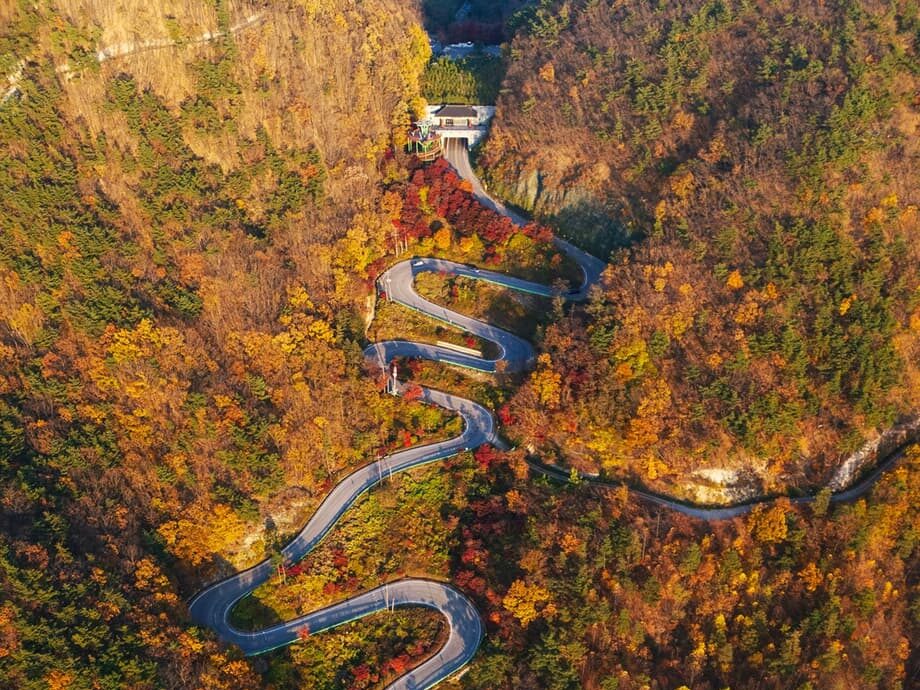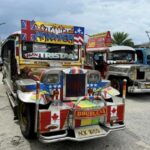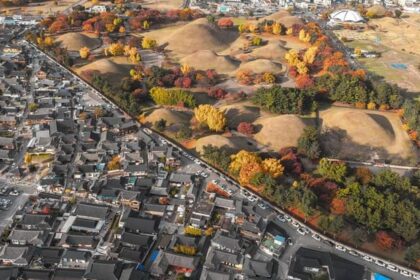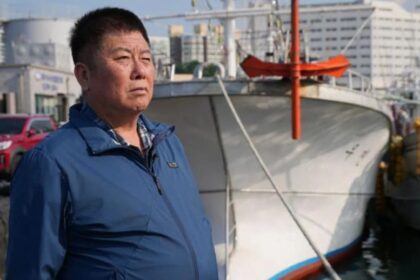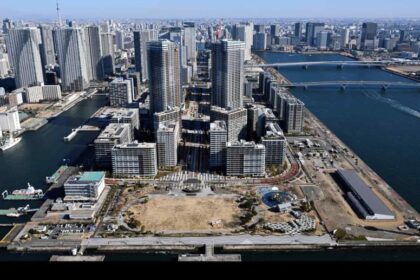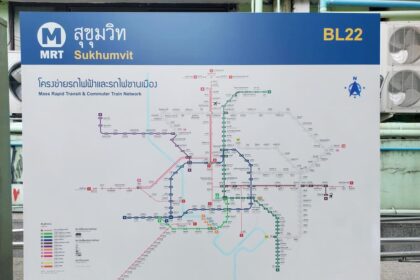Why 2026 stands out for a South Korea trip
South Korea arrives in 2026 with a rare mix of momentum and fresh reasons to go. The country remains a global trendsetter in music, film, and television, yet the biggest draw is how easily visitors can move between a gleaming urban scene and centuries of tradition. Mountain temples sit within reach of neon districts. Tea farms, fishing villages, and pine covered peaks are a short train ride from tech hubs. About 70 percent of the country is mountainous, and Jeju Island rises around a central volcano with beaches, waterfalls, and UNESCO listed lava tubes. This contrast powers memorable journeys, especially for travelers who like to pair a palace visit with a night market, or a coastal walk with a late dinner.
- Why 2026 stands out for a South Korea trip
- Culture meets innovation across daily life
- New on the map: the Dongseo Trail
- Where to go: the essential stops
- When to go: seasons and weather
- Getting around with ease
- Dining in 2026: classic bowls and new award winners
- Entry, money, safety, and etiquette
- Stays and trip styles
- The Essentials
There are three timely changes that make 2026 special. First, the Dongseo Trail, a new long distance path running roughly 848 kilometers (527 miles) between the east and west coasts, will be partially open. It adds ambition and variety to a country already packed with more than 20 national parks and popular hikes like Jirisan and Seoraksan. Second, entry is getting smoother. An electronic arrival card replaces paper by 2026, cutting one more hassle at the airport. Third, the travel scene keeps expanding. New award lists for restaurants, expanded tours, and a steady wave of cultural events give visitors even more to plan around. The result is a year primed for a first visit or a deeper return.
Culture meets innovation across daily life
Travelers feel the balance of old and new from the start. City mornings begin with bowing, temple bells, and quiet alleys of traditional hanok houses, then roll into afternoons of K pop beats, skincare shops, and design forward cafes. This rhythm reflects Confucian roots that prize respect for elders, courtesy in public, and a preference for modesty. It also reflects a modern identity that embraces fashion, esports arenas, and a hunger for the new. You will see women and men posing in hanbok at palace gates, then streaming into a concert or a street food lane after sunset.
Everyday experiences are inviting and easy to tap into. Spend an hour in a jjimjilbang sauna, where families relax together in warm rooms. Share fried chicken and cold beer at a pojangmacha street stand. Wander a market, where vendors pass samples with two hands, a small gesture that signals respect. The country feels orderly and safe, internet is fast, and transit runs on time. These details make long days of exploring possible, even for those traveling with kids or grandparents.
New on the map: the Dongseo Trail
The Dongseo Trail is a headline project for hikers and casual walkers alike. The route links the east and west coasts, crossing mountains, river valleys, and rural towns. Sections are set to open through 2026, with more to follow. The idea is simple and appealing, similar in spirit to famous pilgrim paths in Europe, but grounded in Korean geography and culture. It gives structure to slow travel in a compact country where landscapes change quickly. Expect coastal boardwalks, forest tracks scented with pine and wildflowers, and occasional views of small temples tucked on ridges.
Planning is flexible. You can sample day hikes near big cities, stitch together a two or three day section with simple guesthouses, or aim for a longer stretch when more of the route opens. Spring and autumn bring mild temperatures and clear views, while summer is hot and humid. Carry cash for small shops in rural areas, use public buses or regional trains to reach trailheads, and book lodging in advance during cherry blossom and fall foliage periods. As with any popular route, pack out trash, stay on marked paths, and respect farming areas you pass through.
Where to go: the essential stops
First time visitors often combine one urban base with a coastal or mountain escape. Repeat travelers dig deeper into historic towns and national parks. These destinations anchor most itineraries and offer variety within short travel times.
Seoul: palaces, markets, and river views
Seoul mixes royal history and modern ambition. Start with Gyeongbokgung and Changdeokgung, two grand palaces framed by the mountains that ring the city. Stroll Bukchon Hanok Village for lanes of traditional homes. Cross the river for galleries and high fashion in Gangnam. By night, head to the buzzing food stalls of Gwangjang Market or a late cafe near Hongdae. Museums are strong, parks are plentiful, and the Han River bike paths are an easy way to see the skyline.
Busan: beaches and a cliffside temple
Busan offers sea breezes, culture, and great food. Haeundae Beach is the famous strand, with a lively boardwalk and casual seafood spots. Gamcheon Culture Village brings color and art to hillside alleys. Haedong Yonggungsa, set on rocks above the water, pairs coastal scenery with a spiritual pause. The city feels relaxed compared with Seoul, and ferries, funiculars, and seaside trails make it simple to fill a weekend.
Gyeongju and Andong: tradition and living history
Gyeongju, the ancient Silla capital, is a walkable open air history lesson with royal tombs, temple sites, and engraved pagodas. Andong, to the north, preserves traditional architecture and ritual. Hahoe Folk Village sits in a generous river bend, with tiled roofs, tall pines, and masked dance heritage. Time slows here, and a night in a creaking timber house makes the past feel close.
Jeju Island: lava landscapes and easy escapes
Jeju is South Korea’s natural playground, dominated by Hallasan, the country’s highest peak, and wrapped in coastal crags and beaches. Hike to the crater rim for sweeping views, then descend to visit caves formed by ancient lava flows. The island’s cafes and bakeries crown sea cliffs and tea fields. Jeju is embracing new etiquette guidelines to keep the island clean and calm for residents and visitors, a useful reminder to treat the landscape with care.
National parks for hikers of every level
Jirisan spreads across three provinces and rewards patient walkers with misty ridgelines and remote shelters for multi day treks. Seoraksan packs dramatic granite spires, waterfalls, and cable cars into a compact map. Bukhansan rises right behind Seoul and is loved for quick summit days with big views of the city. With more than 20 national parks nationwide, it is easy to build hiking into a city focused trip.
When to go: seasons and weather
Spring (April to early June) and autumn (September to early November) offer mild temperatures and reliable skies. Cherry blossoms start as early as late March in the south and move north. Fall foliage peaks in October in many mountain regions. Summer runs hot and humid, with monsoon rains generally arriving from late June into July. Winter can be cold, with snow in the mountains and crisp air in the cities. Pack layers and plan outdoor time around midday in winter or early and late hours in summer.
Festivals, school holidays, and public events can fill trains and hotels quickly. Reserve far ahead if you are targeting blossoms, foliage, or a major concert week. On Jeju and in coastal cities, check forecasts during typhoon season, then build a flexible plan that keeps museums or food tours in your back pocket.
Getting around with ease
High speed trains link major cities in a few hours, and regional lines reach smaller towns. Subways are clean and signposted in English as well as Korean. In cities, grab a T money card at a convenience store and tap in for subways and buses. Station staff and many ticket machines have English support. Intercity buses are comfortable and often faster than you expect on expressways.
Taxis are widely available, with ride hailing apps common in big cities. Domestic flights connect the mainland with Jeju in about an hour. Ferries serve coastal routes for a slower, scenic option. All of this means a rental car is rarely necessary, unless you plan a remote itinerary or want full control on Jeju.
Dining in 2026: classic bowls and new award winners
Korean food is a reason to travel on its own. Expect bright flavors, barbecue smoke, and the gentle funk of fermented favorites. Kimchi appears in endless styles. Bibimbap piles warm rice with vegetables, meat, and an egg. Naengmyeon cools summer days with buckwheat noodles in chilled broth. Markets dish mandu dumplings, jeon savory pancakes, and tteokbokki, chewy rice cakes in a spicy sauce. Temple cuisine offers a calm, plant forward counterpoint with seasonal produce and fermented seasonings.
The 2026 dining calendar is already lively. The Michelin Guide plans new entries for Seoul and Busan, including Doori, Bium, GiwaKang, Gosari Express, Onyva, and Sobakeeri Suzu. Doori is praised for a zero waste philosophy that reuses ingredients creatively. In a recent advisory, the Michelin Guide urged food lovers to plan ahead to beat the rush after the full list is released. Representatives explained the surge in interest that follows publication and encouraged early visits for those chasing tables.
Here is how the guide framed the timing for diners who like to be first in line:
We recommend people visit earlier before other gourmets start moving.
Local guides highlight a deep bench of great places beyond star talk. Blue Ribbon Survey, a long running list built from reader evaluations, recognized dozens of top kitchens for 2026 and flagged newcomers that are drawing attention. Names range from refined modern Korean to specialist sushi counters, with a wide city spread that makes planning easy wherever you stay.
For classic stops, Woo Lae Oak in Seoul is beloved for bulgogi and cold naengmyeon. Osulloc tea rooms introduce green tea culture from farm to cup. Gwangjang Market remains a street food paradise. Balwoo Gongyang serves temple cuisine in a serene setting that showcases fermentation and seasonal vegetables. In Damyang, Haengbokhan Imgeumnim is known for generous vegetarian side dishes. On Jeju, Honeymoon House pairs coffee and desserts with sweeping ocean views.
Entry, money, safety, and etiquette
From 2026, most visitors must complete an electronic arrival card online within three days before landing. The service is free and replaces the paper form. Travelers with a valid Korea Electronic Travel Authorization (K ETA), registered residents, and airline crew are generally exempt from this step. The portal is simple to use and allows edits before you pass immigration. Find it at the official site for the arrival card service at e-arrivalcard.go.kr.
Entry rules vary by nationality, and some travelers also need a K ETA or a visa depending on passport and purpose of visit. Bring a passport with sufficient validity, know your first address in Korea, and keep digital copies of documents. Airports have clear bilingual signage, and staff direct arriving passengers to the correct lines.
Credit cards are widely accepted in cities and tourist hubs. Small restaurants or rural shops may only take cash, so carry some won. ATMs in large cities can accept foreign cards, though not every machine does. Tipping is not expected in most places, and some establishments consider it inappropriate. Wifi is abundant. Korea uses 220 volt power with two round pins, so plan for an adapter if needed.
Jeju Island is distributing new etiquette guides after a rise in minor offenses tied to a surge in visitors. The notices list missteps such as jaywalking, littering, smoking in restricted areas, and public drunkenness, with warnings for first time violations and fines for repeat behavior. An official with the Jeju Provincial Police Agency explained the approach this way:
Officers distribute the notices for minor violations, while serious offenses are dealt with immediately.
Stays and trip styles
South Korea offers every kind of overnight. In Seoul, the Park Hyatt delivers polished service and wide city views. For a traditional stay, Rakkojae in Hahoe Folk Village sets you in timber rooms around stone courtyards with warm floors in cooler months. Along the east coast, the ship shaped Sun Cruise Hotel in Jeongdongjin is a fun pick for sunrise lovers. Design forward guesthouses and friendly budget hotels round out the choices in most cities.
Guided experiences help first timers cover ground without stress. Small group operators run itineraries that pair palaces and markets with day trips to the DMZ, hanbok fittings, tea ceremonies, temple stays, and Korean cooking classes. Hikers can weave Seoraksan or Jirisan into the schedule. Food focused tours are strong in Seoul, Busan, and Jeonju. Book early for spring and autumn to secure rail seats and popular hotels.
The Essentials
- New in 2026: the coast to coast Dongseo Trail opens in stages, adding multi day and day hike options across varied landscapes.
- Best seasons: spring (April to early June) and autumn (September to early November) for mild weather, blossoms, and foliage.
- Key stops: Seoul for palaces and markets, Busan for beaches and seafood, Gyeongju and Andong for history, Jeju for volcano views and lava tubes.
- Hiking highlights: Jirisan for multi day treks, Seoraksan for granite peaks and waterfalls, Bukhansan for quick summit days near Seoul.
- Dining news: the Michelin Guide plans new additions in 2026 for Seoul and Busan, while Blue Ribbon Survey names top local favorites.
- Classic eats: kimchi, bibimbap, naengmyeon, tteokbokki, mandu, and temple cuisine are easy to find in cities and markets.
- Entry update: an electronic arrival card becomes standard in 2026, with online submission within three days before arrival.
- Transport: high speed trains, extensive subways and buses, taxis, and short flights to Jeju make travel without a car simple.
- Etiquette: bow slightly when greeting, pass and receive items with two hands, and follow local rules on littering and smoking, especially on Jeju.
- Where to stay: options range from luxury towers in Seoul to hanok guesthouses and the ship shaped hotel at Jeongdongjin.


